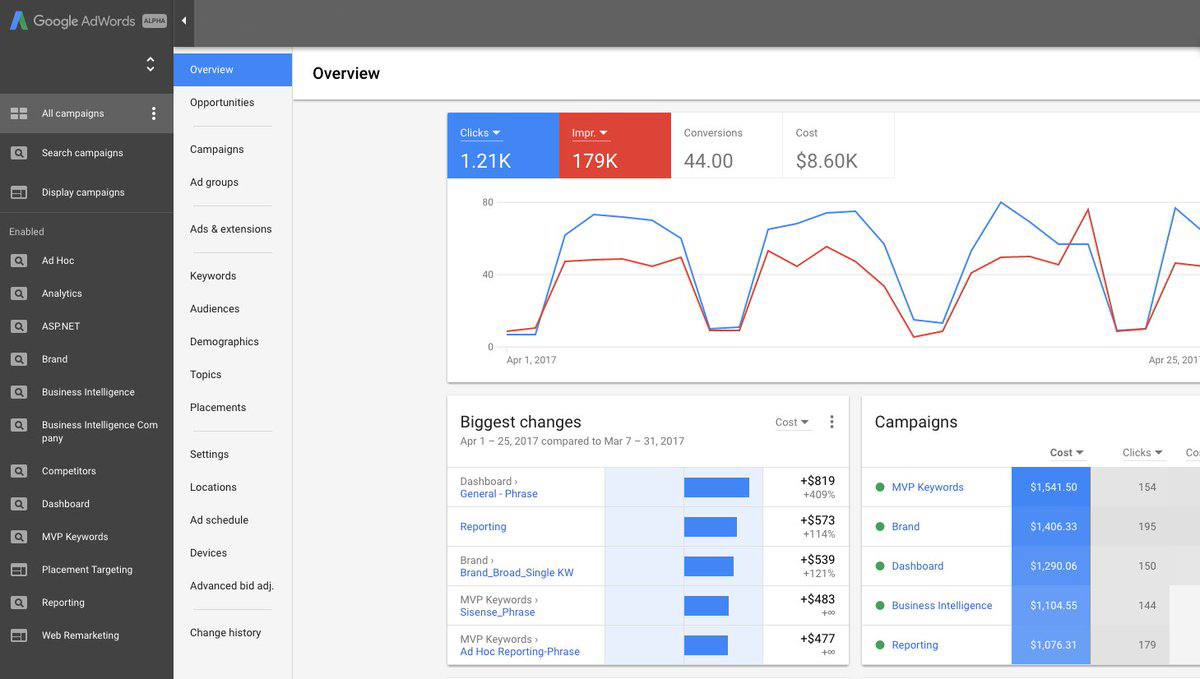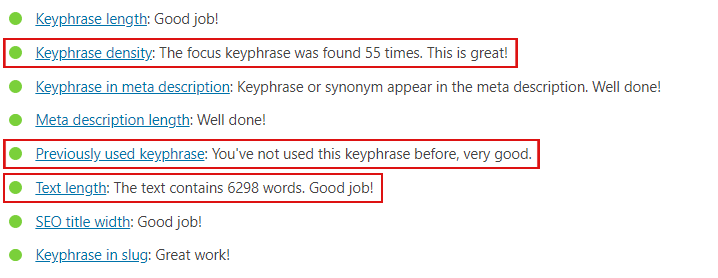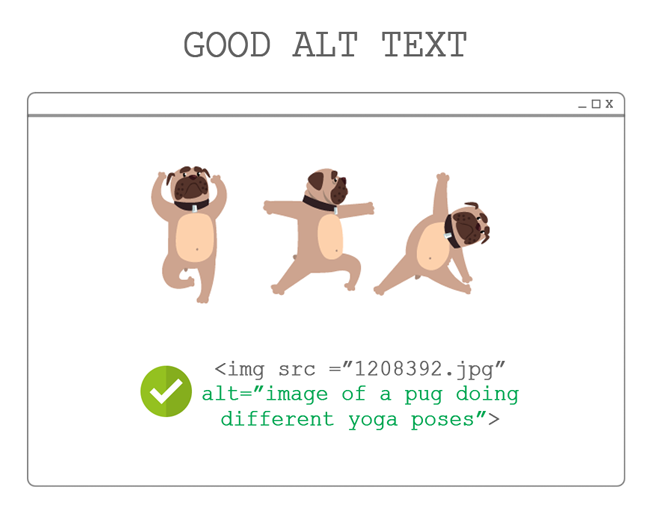SEO is one of the most gimmicky, scammy marketing services out there.
If you’ve ever worked with an SEO company, you’ve probably had some type of experience like this – lots of promises, lots of long term goals, lots of reports but at the end of the day, it just doesn’t affect your bottom line.
Not to say that all SEO offerings are scams, but many are. Those that are upstanding, will use tactics like the ones below to help produce real, long-term growth.
In this article, we will be talking about the hottest tips and tricks about SEO this year to help improve your website’s search engine rankings, without working with a scammy SEO company. Let’s get to it!
- TIP 1: Orientate your thinking around Topic Clusters
- TIP 2: Focus on a Topic rather than a Keyword
- TIP 3: Use Optimized and Unique Titles and Content
- TIP 4: Publish quality content and keep improving it
- TIP 5: Find Keywords that Matches your Sales Funnel
- TIP 6: Your Website’s Loading Speed Matters
- TIP 7: Alt Text: Make it a Habit!
- TIP 8: Internal linking is Key
- TIP 9: Get those Backlinks!
- Featured Video Training
Topic Clusters are a new content planning approach that focuses on pillar and cluster pages. This content marketing strategy has been proven effective by numerous websites including Hubspot.
This technique was actually first introduced by Hubspot, back in 2017. The idea is to create a “Pillar” page that targets seo broad keywords. These pages then contain links to “Cluster” pages which basically are subtopics of the pillar page.
The whole point is to have a pillar page that will be able to answer every possible query that the searchers are submitting.
Topic clusters present your content in an organized manner, so both your visitors and the search engine can decipher what your page is all about, and easily find specific subtopics related to their query.







This is becoming more and more common. As search engines become smarter, keywords are becoming phased out. Search engines examine the whole content, including the categories, internal linking and backlinks, instead of just a simple keyword when ranking for relevance.
While the point about focusing on a topic has been made, you also need to keep in mind that another important factor to creating a competitive content lies within the title.
Your headline affects your overall click-through rate. It’s crazy how a handful of factors contribute to this. Some of which are:
The superlatives in headlines usually decreases CTR.
- Ex: Best, Always, Amazing
Words that create a sense of urgency decreases CTR.
- Ex: Now, Need, Quick
Bracketed clarifications increase CTR.
- Ex: [Infographic], [Guide], [Video]
Shorter headlines are best for higher CTR.
- About 21-40 characters in length
But enough with the headline, let’s move on to the content itself.
You ALWAYS want to make unique content. While this can be hard work, especially with an ecommerce website that has hundreds or thousands of pages, it is worth it in the end.
Duplicate content creates confusion for the search engines’ algorithm. Most of the time, duplicate pages will be left out from the search ranking altogether because the system cannot decipher which of the pages are relevant.
A lot of time, having too many duplicate pages will result in having your page tagged for intent to manipulate ranking. This will highly affect the ranking of not just these duplicate pages, but your whole website itself.


These are SEO suggestions by Yoast SEO. You can see that the suggestions are mostly focused on the keyword (or keyphrase, as they call it) and about the content itself.








Content creation doesn’t only end with making sure it is unique. This is actually just the beginning.
Over the years, the definition of high quality content has completely changed. Before, it was easy to just write an article with about 1,500 words referencing all information by experience and publishing it as is. You can certainly still do that today, but don’t get your hopes too high with it.
Today, content marketing is as tedious as can be. With all the information widely available on the internet, offering something that no one has offered before is almost next to impossible.
Put your time and effort (and sometimes money, too) into the content creation process, and it will surely be rewarding!
And once you have found that sweet spot, keep digging! Find more of those precious, unique and relevant topics that you can keep adding to your existing pages.
Sales funnel, AKA a buyer’s journey, is a good starting point of your keyword research. To understand it clearly, here’s a visualisation of the said journey:


Years have gone by and everything has changed, except for the sales funnel. This is one of the fundamentals in marketing as every customer goes through this journey.
The thought process of each customer involved in each stage is different, so it doesn’t make sense to target all of them with just one keyword or topic, right?
That’s exactly the common issue. Most companies or institutions focus on just one level of the funnel, which would be level 4 or “Intent.”
While this is not entirely wrong, you should consider how vast the internet is and how many competitors you have. You should definitely consider how you can bring in people into different levels of your funnel and how to push them down to the next level.
This will include researching keywords that your competitors are using to pull in new prospects, keywords for possible content that will leave a mark in your audience’s minds and build awareness, and keywords that you can use to present a one-up against your competitors.





I’ll make this as simple as possible: It is not a secret that Google includes site speed as a factor when ranking pages.
As they point out, site speed will make or break user experience of the website, and Google is all about making their users happy.
At times of slow site speed, a lot of users landing on your page will not wait for your page to load, and they will almost always bounce right out.
I personally don’t wait around for a website to load. If I see a blank screen after a few seconds after clicking a link, I just assume it’s broken and move on to the next one. I’m sure I’m not the only one.
A study by Microsoft shows that an average human being has an attention span of 8 seconds. Yes, our attention span is shorter than a goldfish when we’re browsing the internet. Imagine just how much shorter it is when looking at a blank page!
This will ultimately affect your bounce rate negatively and it can only go downhill from there if not addressed correctly.
So, you put 20 images on your blog post and they are all a-ma-zing! The images present the whole concept of your post and it is the icing on the cake. Well, Google wouldn’t really know that until you put alt-text on each of them.
This will only take a few minutes, if not seconds, of your time. And honestly, it’s worth it. I have had good experience with this, especially for infographics.
You wouldn’t believe how many people search for infographics about almost anything! And Google will actually be able to show your infographics on the search result if you put an alt-text that specifies exactly what it is.









Internal linking is probably the easiest of SEO best practice there is. These are the links that point to the same domain.
With internal linking, Google is able to identify the pillar pages on your website because it ultimately helps to find, index and understand these pages.
If you want to get a higher Google ranking, internal linking is one of your golden keys to success.
Just make sure to use anchor texts that will suggest what your link is about. And the way you should be linking is from your cluster page to your pillar page, as this will be sending link authority to that page.
Last but not the least, backlinks. This type of link is your cream of the crop if you are all about ranking highly on Google.
It is now 2020 but backlinks are still highly valuable. In a research conducted by SEMrush, URLs on the first position has about 2.2 times more backlinks than the second search result.
What works best is for you to create quality content that will have people want to share it. Usually, these are some statistics, research and case studies, that you can include in your article. People would want to share content that is backed by facts.
While every acquired link is valuable, those from authoritative websites from the same industry as yours are priced higher.
As Google has put it, “Beyond matching the words in your query with relevant documents on the web, search algorithms also aim to prioritize the most reliable sources available….”
We look for sites that many users seem to value for similar queries. If other prominent websites link to the page, that has proven to be a good sign that the information is well trusted.”
For example, you published a content about a newly developed AI technology. While getting a link back from ESPN is good, a link from aaas.org can be worth 200 times more than the former.
Conclusion
You see, SEO is truly a lot of work! However, this effort is nothing compared to the value that it can bring into your website. It takes time to build enough content, to get all those backlinks and reach your ultimate goal of ranking number one. But it is not impossible!
Keep working, keep improving, and you’ll get there!




